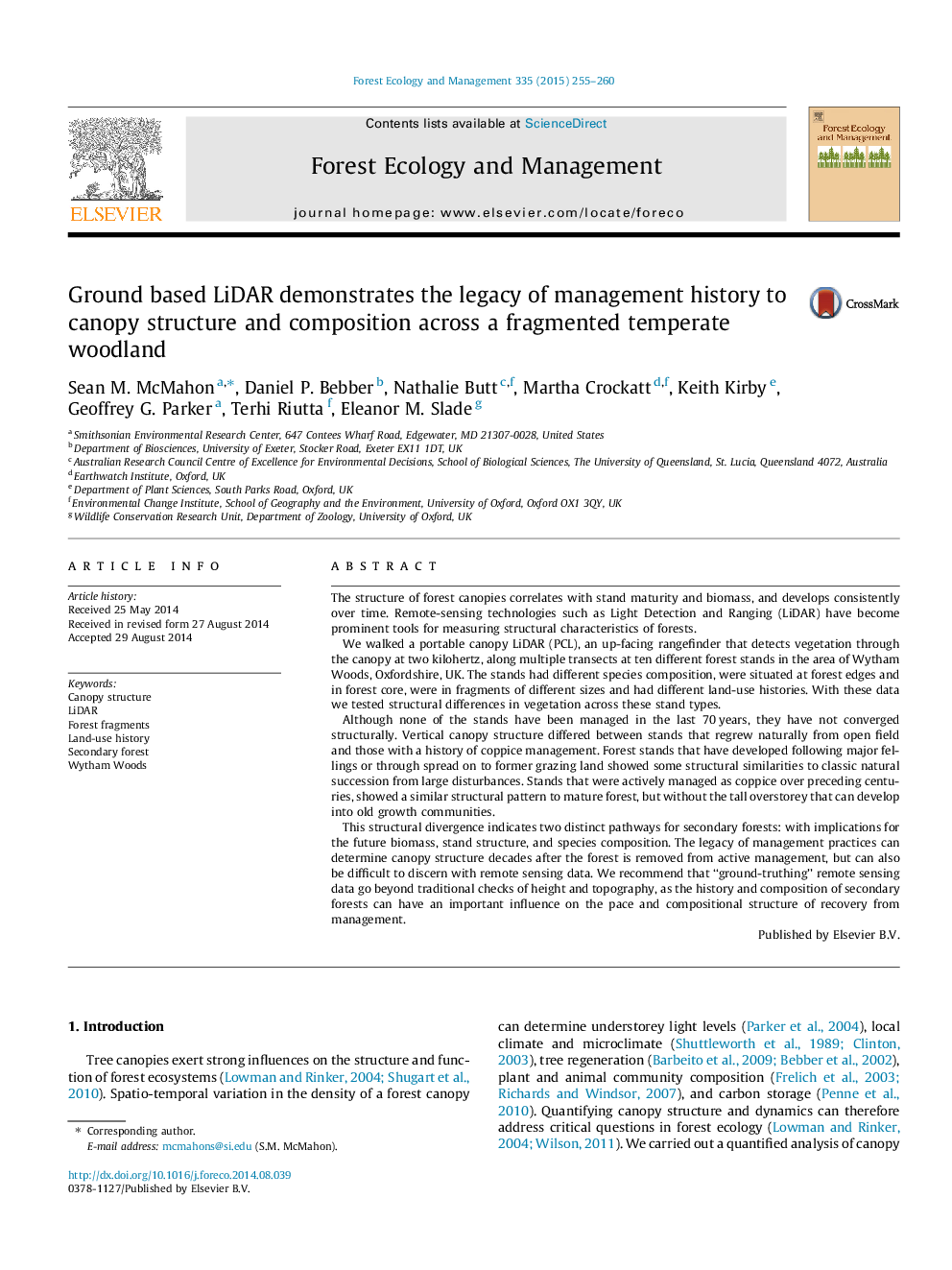| Article ID | Journal | Published Year | Pages | File Type |
|---|---|---|---|---|
| 6543045 | Forest Ecology and Management | 2015 | 6 Pages |
Abstract
This structural divergence indicates two distinct pathways for secondary forests: with implications for the future biomass, stand structure, and species composition. The legacy of management practices can determine canopy structure decades after the forest is removed from active management, but can also be difficult to discern with remote sensing data. We recommend that “ground-truthing” remote sensing data go beyond traditional checks of height and topography, as the history and composition of secondary forests can have an important influence on the pace and compositional structure of recovery from management.
Related Topics
Life Sciences
Agricultural and Biological Sciences
Ecology, Evolution, Behavior and Systematics
Authors
Sean M. McMahon, Daniel P. Bebber, Nathalie Butt, Martha Crockatt, Keith Kirby, Geoffrey G. Parker, Terhi Riutta, Eleanor M. Slade,
